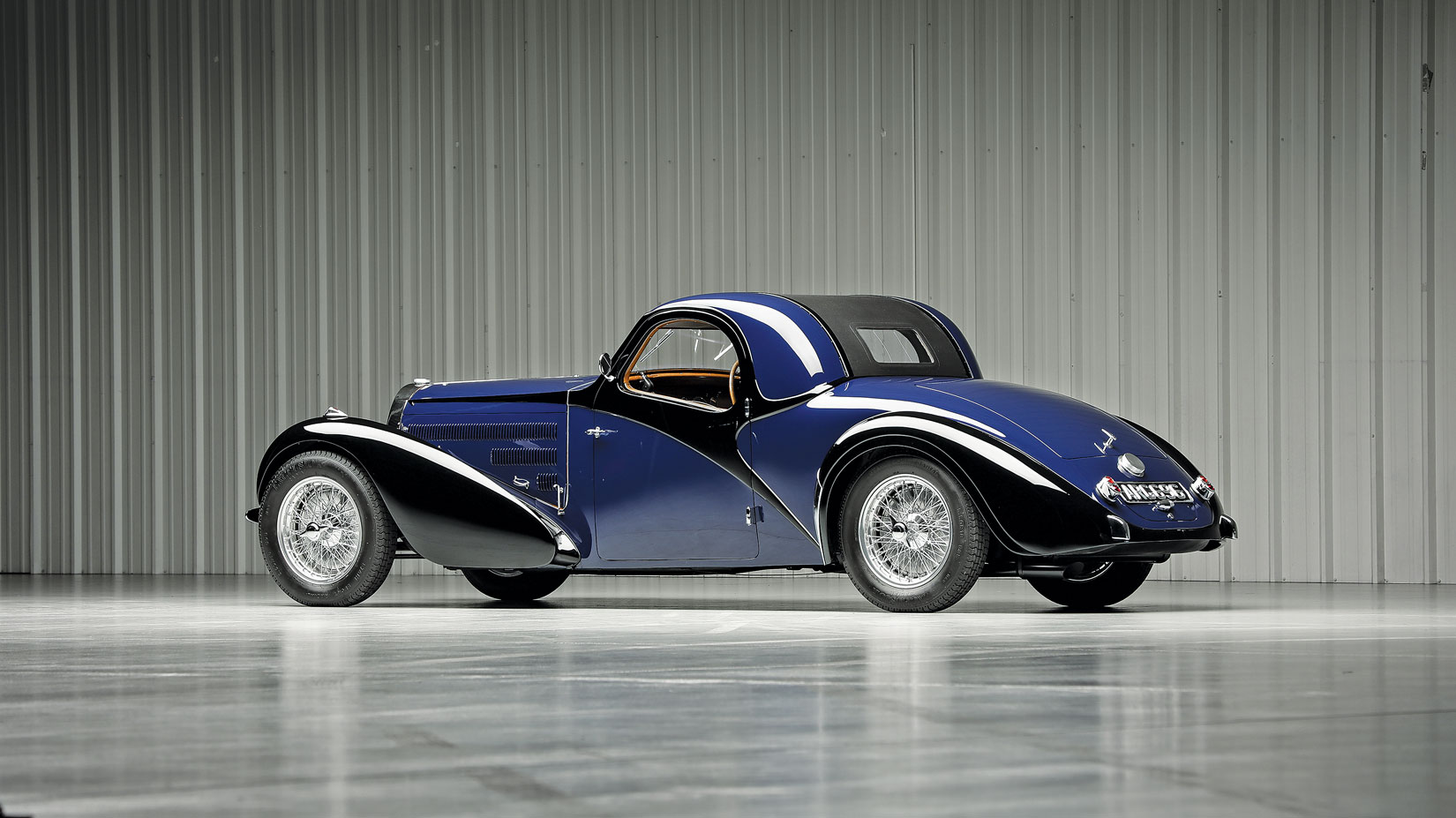Chassis Number: 57641
When the Bugatti Type 57 first hit the pavement back in 1934, there was simply nothing that could compare to it. Designed by founder Ettore Bugatti’s son, Jean, the Type 57 captured the swanky allure of Art Deco styling with vast curving lines that concluded in sharp, striking angles. Like its predecessors, the Type 57 was the ultimate combination of style and speed. In 1936, more improvements were ushered in including revised engine mounts, redesigned exhaust manifold, a modified crankcase with provision for supercharger mounting as well as De Ram self-adjusting shock absorbers and a new dashboard with larger and striking dual instruments.
Only 710 Bugatti Type 57 automobiles were produced from 1934 through 1940, including a variety of sedans and coaches as well as coupes. The most desirable and rare Type 57, amidst all its variations, was the Atalante coupe. The coachwork on the Atalante was done in the Molsheim Bugatti factory as well as Gangloff Coachworks in nearby Colmar. Jean Bugatti’s long, low and voluptuous design was, and still is, one of the most beautiful cars the marque ever designed.
Fewer than 40 Atalantes were produced between 1937–39, with only a handful featuring “roll-back” roofs like this one. Chassis number 57641 is a Type 57C, Series 2 that carries a history as intriguing as the complex region of Alsace where it was conceived. This stunning car has resided in more than one prominent garage and has been written about by the noted Bugatti historian David Sewell. Bugatti factory records invoiced this car for direct delivery to Monsieur Baptifaut of France. In May of 1951, chassis 57641 then passed into the Joussy family, who showed the car at concours and even participated at the Corsica Trials on multiple occasions. During the Joussy family’s ownership, the car was cited in The Bugatti Book, which was published in 1954 to commemorate the 25th anniversary of the Bugatti Owners Club.
By 1960, chassis 57641 belonged to serious Parisian Bugatti collector Henri Novo. It was during Novo’s ownership that coachwork modifications are believed to have been undertaken. The 1962 Bugatti Register lists chassis 57641 as a Ventoux drophead coupe, but the current coachwork, and citation in later publications, list the car as an Atalante coupe with the rare “roll-back” roof design. According to Sewell, just eight Atalante bodies were built in 1935; only three of them featured a roll-back roof. In 1936, only one roll-back roof was produced, and it is accounted for. So the original Atalante coachwork had to have been acquired from a 1935 Type 57 Atalante.
Eventually, this Atalante was housed at the famous Schlumberger Art Collection in Paris. It’s virtually impossible to overstate the Schlumberger’s influence on the world of art and design. For instance, São Schlumberger was the first person to ever commission Andy Warhol for a screen print of her portrait — an iconic style the man was known for. Pierre Schlumberger, outside of his patronage of some of the world’s greatest museums, was financially responsible, in part, for the restoration of the Palace of Versailles.
The last leg of chassis 57641’s illustrious journey landed the car on North American shores. In 2012, the current owner of the car purchased it from Michel Seydoux and brought it out to Gainesville, TX, where one of the country’s most-lauded coachwork houses, Bob Smith Coachworks, restored the Atalante with expert precision. The Atalante would leave his studio and go on to be exhibited at both the Amelia Island Concours and the Pebble Beach Concours d’Elegance.

